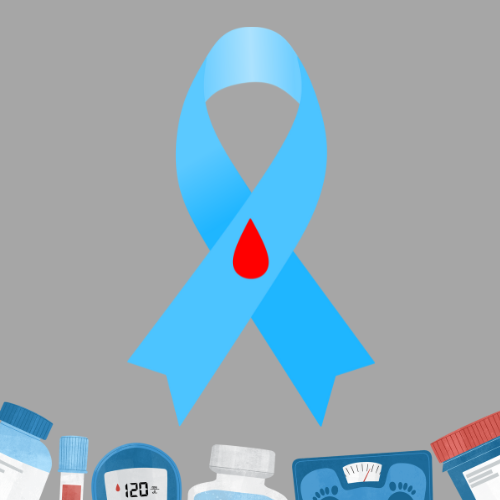There are 2 main types of diabetes:
- Type 1 diabetes – a lifelong condition where the body’s immune system attacks and destroys the cells that produce insulin
- Type 2 diabetes – where the body does not produce enough insulin, or the body’s cells do not react to insulin properly
High blood sugar that develops during pregnancy is known as gestational diabetes. It usually goes away after giving birth.
Type 2 diabetes is far more common than type 1. In the UK, over 90% of all adults with diabetes have type 2.

Causes of diabetes
The amount of sugar in the blood is controlled by a hormone called insulin, which is produced by the pancreas (a gland behind the stomach).
When food is digested and enters your bloodstream, insulin moves glucose out of the blood and into cells, where it’s broken down to produce energy.
However, if you have diabetes, your body is unable to break down glucose into energy. This is because there’s either not enough insulin to move the glucose, or the insulin produced does not work properly.
There are no lifestyle changes you can make to lower your risk of type 1 diabetes.
Symptoms of Diabetes
Visit your GP as soon as possible if you experience the main symptoms of diabetes, which include:
- Feeling very thirsty
- Passing urine more frequently than usual, particularly at night
- Feeling very tired
- Weight loss and loss of muscle bulk
- Itching around the penis or vagina, or frequent episodes of thrush
- Blurred vision
Treatment for Diabetes
Type 1 Diabetes
If you have type 1 diabetes, your body cannot produce insulin. You’ll need to be prescribed insulin to stop your blood glucose from getting too high.
Insulin is a medicine that helps your body use glucose (sugar) for energy.
Type 2 Diabetes
Some people can put their type 2 diabetes into remission by losing weight, where their blood sugar is reduced below the diabetes range. They are able to do this through a low-calorie diet, but this is not suitable for everyone.
Type 2 diabetes can get worse over time and people living with type 2 diabetes often need medicine, usually in the form of tablets or injections.
Metformin is the most common medicine used for type 2 diabetes. It can help keep your blood sugar at a healthy level.
Who is at Risk of Diabetes
Non-diabetic hyperglycaemia (pre-diabetes)
Many people have blood sugar levels above the normal range, but not high enough to be diagnosed as having diabetes. This is known as non-diabetic hyperglycaemia, or pre-diabetes.
People most at risk as well as those with pre-diabetes:
People who are overweight or obese.
Do not have a healthy diet
Have a family history of type 2 diabetes
Take certain medicines such as steroids for a long time
Have high blood pressure
Ethnicity and type 2 diabetes. Asian, Black African or African Caribbean origin.
Have had gestational diabetes during pregnancy
You can reduce the risk of type 2 diabetes through healthy eating, regular exercise and achieving a healthy body weight.
Complications of Diabetes
If you have diabetes, your eyes are at risk from diabetic retinopathy, a condition that can lead to sight loss if it’s not treated.
Everyone with diabetes aged 12 years old or over should be invited to have their eyes screened regularly.
Diabetes can damage the nerves in your feet and cause a loss of feeling. It can also reduce the blood supply to your feet. This means you may not notice if your foot is sore or injured, and foot injuries do not heal as well. This can lead to ulcers and infections, and sometimes amputations can be needed in serious cases.
Adults with diabetes should have their feet checked every year by a healthcare professional.



